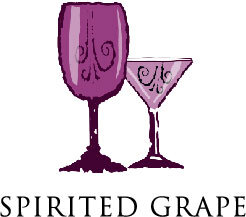Italy’s Sparkling Wines: Dual Personalities (part two)
/Franciacorta
Franciacorta is Italians’ response to Champagne.
History and geography
Wine and culture of Franciacorta appeared in one of the first published works about the technique of production of natural fermentation wines in the bottle and their beneficial and therapeutic action on the human body - printed in 1570.
While boasting a long history, the current course of Franciacorta didn’t begin until the early '60s.
Franciacorta lies in Lombardy in the province of Bescia within territory of Franciacorta. Lake Iseo moderates the climate while the hills to the east and west protect the region from winds. Soils are mostly morainic, laid down by the glaciers that formed the lakes and valleys.
Franciacorta was the first Italian sparkling wine produced by the Classic Method (second fermentation in the bottle) awarded Denominazione di Origine Controllata e Garantita (DOCG) in 1995. Today, the wine reads simply “Franciacorta”: this defines the growing area, the production method, and the wine. There are only ten such wines in all of Europe and only three of them are sparkling: Champagne, Cava and Franciacotra.
Franciacorta today is still a relatively small region with 2,700 hectares under vine and around 100 producers.
Grapes, production and styles
The Franciacorta DOCG limits the varieties to Chardonnay, Pinot Nero and Pinot Blanco. It also regulates yields, harvesting times, conditions and many other aspects of winemaking.
Fanciacorta enjoys a long secondary fermentation in the bottle and is aged for many years before release. While universally known as sparkling wine made in the traditional method, locally this process is referred to as the “Franciacorta method”.
The categories of Franciacorta:
1. Non-vintage – Aged on its lees for 18 months and not released until at least 25 months after harvest. Chardonnay and/or Pinot Noir, with up to 50% Pinot Bianco. Produced in a range of styles: Pas dosé, Extra Brut, Brut, Extra Dry, Sec, or Demi-Sec.
2. Satèn - Aged on its lees for 24 months. Satèn is always blanc de blancs made predominantly of Chardonnay with up to 50% Pinot Bianco allowed. Satèn is bottled at a slightly lower pressure (less than 5 atmospheres of pressure instead of the standard 6 atmospheres) giving it a softer mouthfeel. Produced in only the Brut style.
3. Rosé – Aged on its lees for 24 months. Rosé is often made from just Pinot Noir grapes, but may also be made by blending a minimum of 25% Pinot Noir with base wines of Chardonnay and/or Pinot Bianco. Produced in a range of styles: Pas dosé, Extra Brut, Brut, Extra-Dry, Sec, or Demi-Sec.
4. Millesimato (Vintage) – Aged on its lees for 30 months and not released until at least 37 months after harvest. At least 85% of the base wine must come from one single growing year. Both Satèn and Rose can include Millesimato. Produced in a range of styles: Pas dosé, Extra Brut, Brut, Extra Dry (Satèn only Brut)
5. Riserva – Is a Millesimato (can include Satèn and Rose) which is aged on its lees at least 60 months and not released until at least 67 months (5 ½ years) after harvest. Since many Franciacorta Millesimatos rest sur lie far longer than the required minimum of 30 months, this designation was created to highlight this unique type of wine. Produced in a range of styles: Pas dosé, Extra Brut, Brut (Satèn only Brut)
The dosato of Franciacorta are defined in the same way as Champagne’s dosage levels.
Pas dosé (No dosage, dosage zero, pas opéré or nature) - maximum 3 grams per liter residual sugar
Extra Brut – maximum 6 grams per liter
Brut – maximum 12 grams per liter
Extra Dry – between 12-17 grams per liter
Sec (Dry) – between 17-32 grams per liter
Demi Sec – between 32-50 grams per liter

